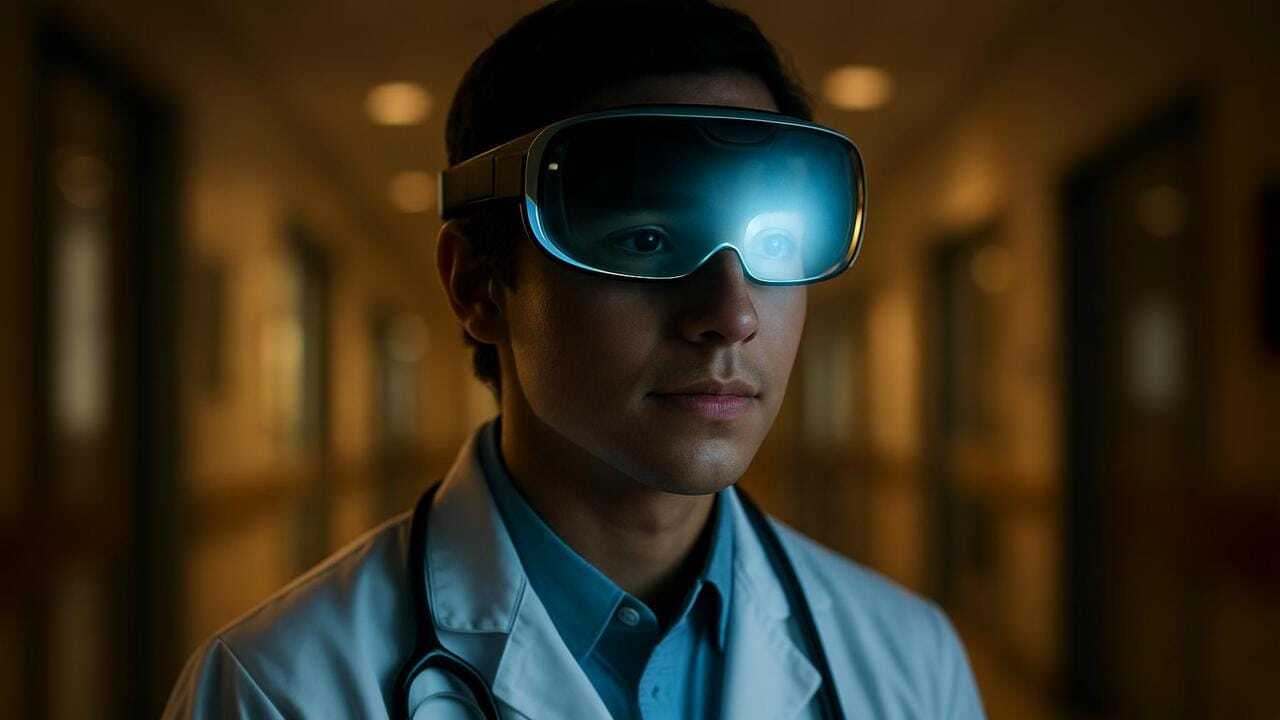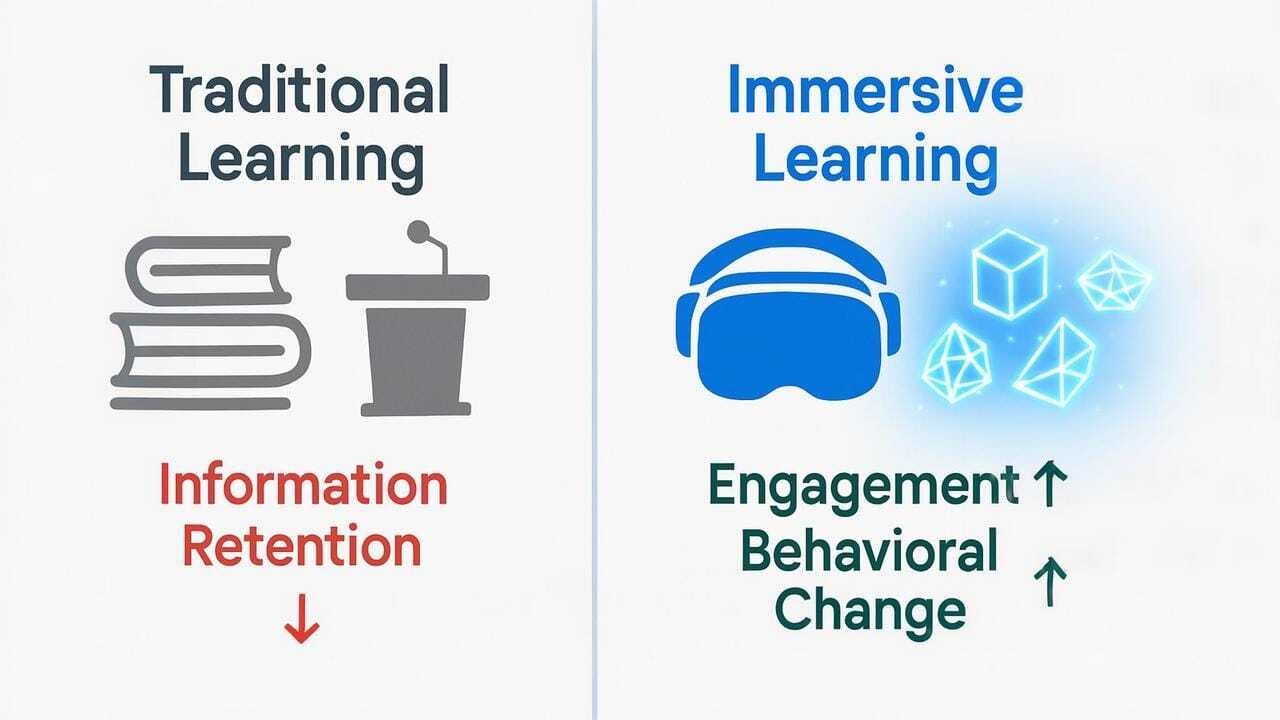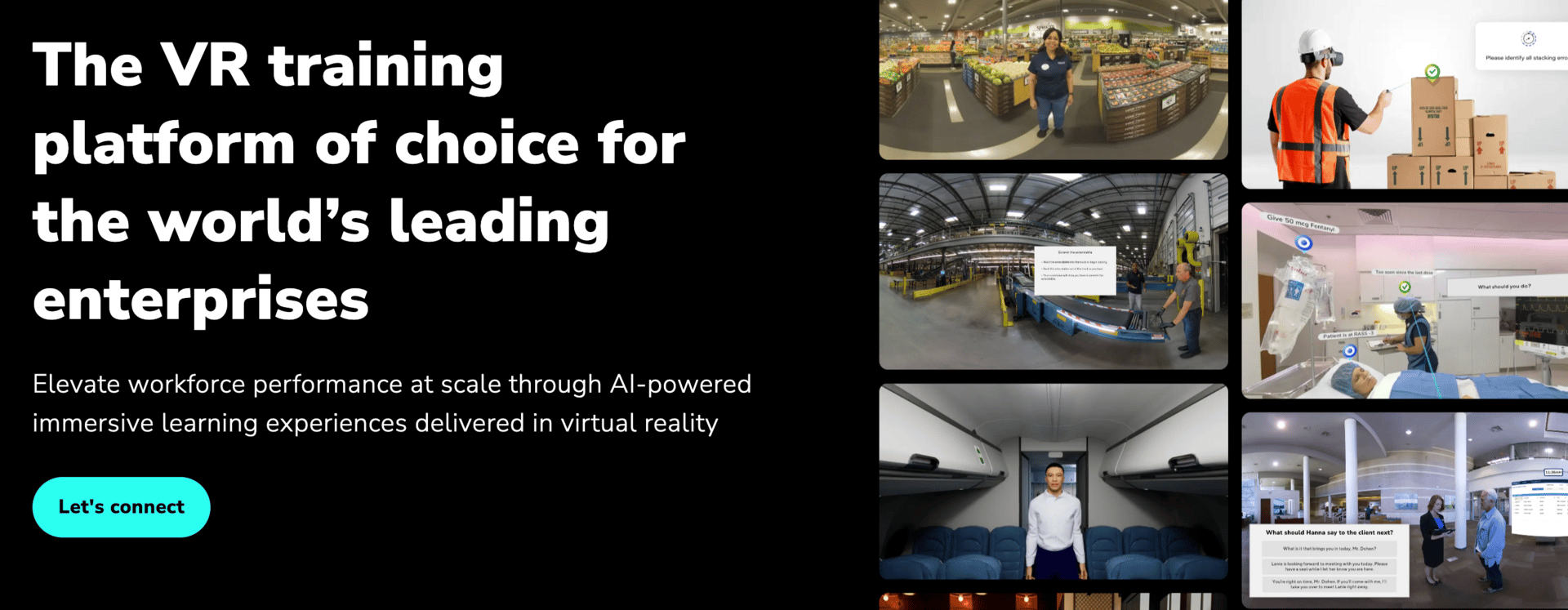- XR Insider
- Posts
- Can Virtual Reality Make Doctors More Human?
Can Virtual Reality Make Doctors More Human?
Stanford’s empathy-training experiment may change how we teach medicine—and how we teach humanity itself.

Can a headset teach what years of medical school can’t?
Earlier this week, I came across a post on LinkedIn about a fascinating case from Stanford Children’s Hospital, and it stopped me cold.
The hospital partnered with Strivr to create a VR empathy-training program for pediatric cardiology fellows, helping them navigate one of medicine’s hardest challenges: delivering devastating news to families.
Inside the simulation, physicians practice not procedures, but presence.
The early data is remarkable: 70% of learners validated the program’s effectiveness, 95% said they’d take it again, and 100% reported feeling more confident delivering bad news with empathy.
In this edition of Mastermind VR Insider, I want to expand on that story, exploring why this kind of immersive learning could redefine not just how doctors are trained, but how every industry teaches its people to lead, communicate, and connect.
Because this isn’t just about VR in hospitals. It’s about how technology is teaching humanity itself.
Choose the Right AI Tools
With thousands of AI tools available, how do you know which ones are worth your money? Subscribe to Mindstream and get our expert guide comparing 40+ popular AI tools. Discover which free options rival paid versions and when upgrading is essential. Stop overspending on tools you don't need and find the perfect AI stack for your workflow.
🧠 Inside the Simulation That Teaches Doctors to Feel
It’s one thing to learn how to operate on a heart. It’s another to look into the eyes of a parent and tell them their child might not survive.
For generations, medical schools have trained doctors to think fast, act decisively, and stay composed under pressure. But empathy, the skill that defines trust, connection, and healing, has rarely been something you could practice.

That’s what Stanford Children’s Hospital set out to change. In collaboration with Strivr, the hospital designed an immersive training program that places pediatric cardiology fellows inside simulated conversations with patients’ families. Wearing a VR headset, doctors face emotional scenarios that mirror real life: a parent’s panic, a nurse’s hesitation, and the weight of bad news.
They must navigate these moments in real time, balancing honesty with humanity.
VR Tool of the Week: Strivr Immersive Learning Platform
Strivr—the platform powering Stanford’s groundbreaking empathy training—helps organizations turn immersive simulations into measurable skill development.
From healthcare to Fortune 500 retail, it’s redefining how companies teach soft skills that truly matter.
Key Highlights:
📊 Proven impact: Over 1 million learners trained across industries, including healthcare, logistics, and corporate leadership.
🧠 Behavioral analytics: Tracks decision-making, emotional responses, and engagement in real time to measure learning outcomes.
🧩 Enterprise integration: Works seamlessly with existing LMS systems and can scale globally with minimal hardware setup.
🌎 Clients include Walmart, Verizon, Bank of America, and now Stanford Children’s Hospital—all leveraging VR for empathy, safety, and leadership training.
Strivr transforms training from information transfer into behavioral transformation—helping teams not just know better, but act better.
👉 Discover how Strivr can elevate your organization’s learning experience. (Learn more)
💡 What the Results Reveal
The early data is remarkable:
70% of participants validated the training’s effectiveness in handling difficult conversations.
95% said they’d want to retake the simulation.
100% reported feeling more confident delivering bad news with empathy.
In a field where communication failures often have lifelong consequences, those numbers are more than metrics; they represent lives impacted, trust built, and care delivered better.
This is not about replacing human interaction with digital tools.
It’s about using immersion to restore something medicine has lost: presence.
HUGE XR NEWS (from last week)
Samsung’s Galaxy XR Launches at $1,799 – Cutting the Price Gap with Apple
Samsung’s newly unveiled Galaxy XR headset enters the mixed-reality race at half the price of the Apple Vision Pro, signaling serious competition ahead. (learn more)
Galaxy XR Becomes the First Device on Google’s Android XR Platform
Built in partnership with Google and Qualcomm, the Galaxy XR marks the debut of Android XR, turning XR from niche hype into a platform ecosystem. (learn more)
XR Sports Alliance Brings Major Sports Franchises into XR – 22 Members and Counting
The alliance’s expansion includes elite sports teams like the Vegas Golden Knights and Maple Leafs, showing XR is moving into high-stakes live fan engagement. (learn more)
Transfr Inc. Launches XR-Based Career Training Programs for Workforce Development
With XR modules now being used to accelerate career-training outcomes, immersive tech is shifting from high-end simulation into skill development for the everyday workforce. (learn more)
Galaxy XR Controllers Sell Out Immediately—Early Demand Defies the XR Slowdown Narrative
Even before full global rollout, the accessory controllers for Samsung’s XR headset are already sold out, hinting that the XR market may be stirring again. (learn more)
🩺 Why This Matters Beyond Healthcare
The same immersive principles can apply anywhere empathy, composure, and communication are critical, from leadership and crisis management to sales, customer care, and negotiation.
Traditional e-learning teaches information.
VR teaches instinct.
When learners are emotionally engaged, they don’t just remember facts; they rewire behaviors.
That’s the real revolution in immersive training: the shift from teaching knowledge to shaping identity.
🌍 A Glimpse Into the Future
We’re entering a new era of learning, one where simulations don’t just model what to do, but who to become.
What Stanford is doing for pediatric medicine today could soon reshape entire industries. Imagine executives practicing empathy before providing feedback. Police officers learning to de-escalate through virtual rehearsals. Teachers are training to handle classroom anxiety or trauma with compassion.
The potential is staggering and profoundly human.
Because in the end, the goal of immersive technology isn’t to escape reality.
It’s to help us return to it, more skilled, more self-aware, and more human than before.
The best technology doesn’t replace humanity—it refines it.
If this story resonated with you, let’s turn inspiration into implementation.
💬 Book a 30-minute discovery call and see how we can bring immersive learning to your organization’s most human challenges.
That’s a wrap!!
Talk soon!
Bruno Filkin
Founder, Mastermind VR
VR Strategy Consultation
Ready to explore VR training for your team?
Take the Next Step
Let us review your project and discuss possible development and production details.
👇🏼
How would you rate this episode? |



